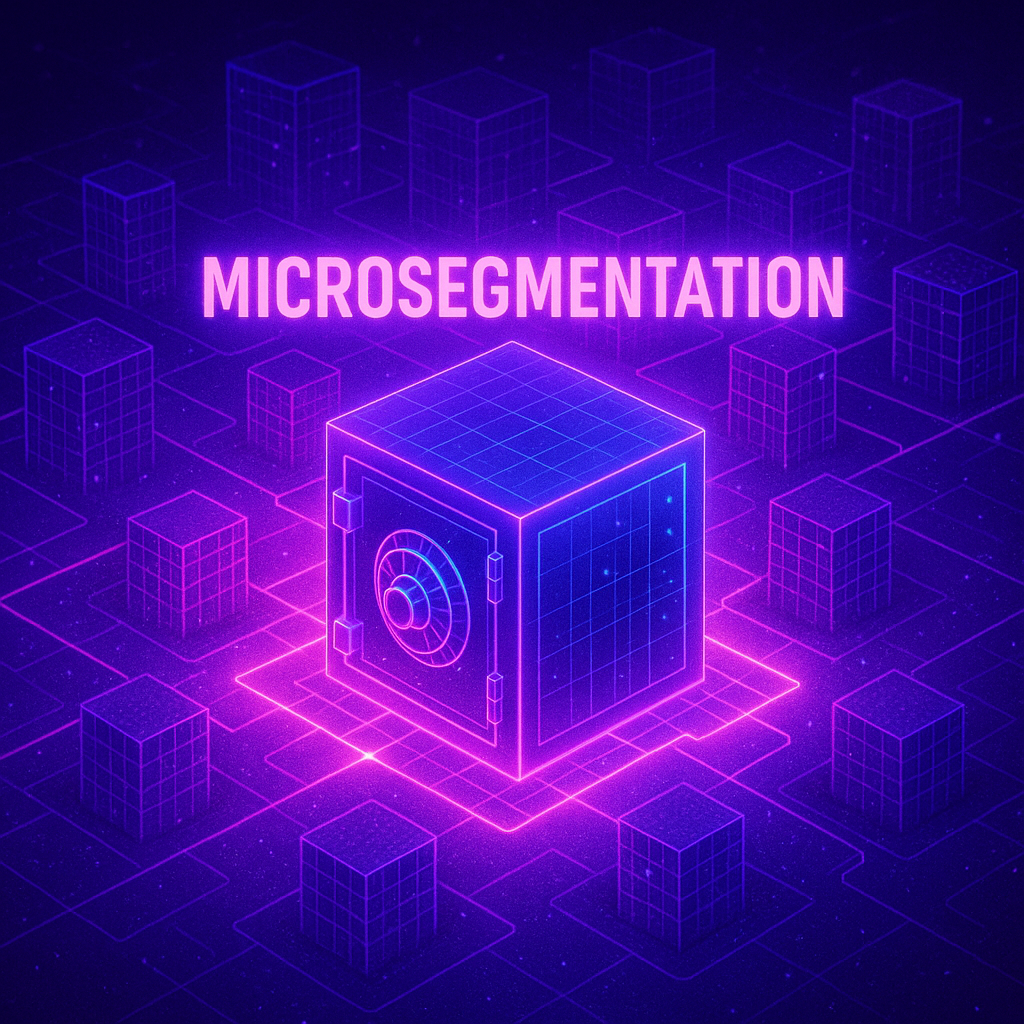Is Microsegmentation Just Another Buzzword – Or Is It Actually Doing Something?
You’ve probably heard it in every other vendor pitch: “We isolate workloads, enforce least privilege, and secure lateral traffic with microsegmentation!” Sounds airtight, right? Except, what does that even mean—technically?
If you’re a CISO, lead security architect, or senior engineer, you already know that most breaches don’t start with perimeter attacks anymore. They move sideways once they’re inside. Microsegmentation claims to stop that cold. But how?
The short version? Microsegmentation creates virtual “walls” between different parts of your infrastructure—applications, containers, services—so even if one part gets compromised, the rest stays safe. But the devil’s in the details. It’s not just about setting rules. It’s about how those rules are created, enforced, monitored, and maintained in real time.
Let’s break this down. Step-by-step. Component-by-component.
How Are Microsegmentation Policies Created in the First Place?
Before anything’s enforced, someone has to define what’s allowed and what isn’t. That’s where things start getting murky.
You usually begin by mapping your environment: what workloads talk to each other, over which ports, and why. Sounds easy? It’s not. Most orgs don’t have an up-to-date application dependency map, so this step is either guesswork or weeks of flow data analysis.
Then you write segmentation rules:
- Allow service A to talk to service B over port 443.
- Block everything else.
These rules get translated into policy files (YAML, JSON, or through a GUI) and fed into a central controller—could be an orchestration tool like Kubernetes, a cloud-native firewall (Azure NSG, AWS SG), or a third-party platform like Illumio or Guardicore.
Who’s in charge here? Usually a joint effort: security teams define intent, infra teams enforce the config. But there’s tension: go too strict, and you break apps. Go too loose, and attackers walk in the front door.
What’s Actually Happening Under the Hood When a Packet Tries to Cross a Boundary?
So you’ve got rules in place. But how are they actually applied?
Imagine a packet leaving a container. It hits a virtual NIC (vNIC), then flows through the host kernel or a user-mode agent that enforces the policy. This enforcement could happen:
- At the OS level (Linux iptables, Windows Filtering Platform),
- Through eBPF filters (faster, dynamic),
- Or via an inline proxy like Envoy (common in service meshes).
That’s the technical chokepoint. Every packet gets checked: Does it match a policy? If yes, allow. If not, deny or drop.
But here’s the kicker: not all packets are equal. A SYN packet might get through during a race condition. Or a legitimate connection might be terminated if the policy refreshes mid-session.
Also, policies live in memory. If the enforcement agent crashes? You could have a brief window where traffic flows uninspected. Not all tools have graceful fallbacks.
Who Watches the Watchers? How Are These Policies Monitored Over Time?
Creating rules is one thing. Making sure they still make sense six months later? That’s a whole other ball game.
Modern microsegmentation tools claim to be dynamic—they collect telemetry, suggest new policies, and adapt in real-time. But in practice, a lot of teams “set and forget.” The initial policy audit happens, rules are deployed, and then… not much.
Here’s where the SOC comes in. Using tools like ELK, Prometheus, or Splunk, they can monitor:
- Which flows are being denied
- Latency introduced by enforcement
- Unexpected spikes in dropped connections
But that assumes you’re capturing the right logs. If flow logging isn’t turned on—or worse, only sampled—you might miss a lateral move in progress. And some cloud-native tools (like AWS VPC flow logs) have delay in delivery, meaning you’re always a few minutes behind.
Where Do Things Break Down? What Are the Hidden Failure Points No One Talks About?
Let’s be honest—microsegmentation sounds foolproof. But there are cracks in the armor, and attackers know how to find them.
Policy Drift
Rules written six months ago may no longer match how apps behave today. Suddenly, you’re either over-permitting or breaking stuff silently.
Sidecar Blind Spots
If you’re using a service mesh (like Istio), all traffic goes through a sidecar proxy (usually Envoy). But if that sidecar crashes or is misconfigured? The pod might bypass it altogether.
Latency Under Load
When policies get too complex, especially with deep inspection or dynamic rules, you can introduce serious latency. Imagine a real-time trading platform with 10ms delays—security becomes the bottleneck.
Rollback Gaps
Sometimes updates to segmentation rules get rolled back without full audit trails. One bad CI/CD push and you’ve re-opened old vulnerabilities without knowing it.
Can You Really Trust Vendor Claims About ‘Zero Trust’ Microsegmentation?
Every vendor will tell you the same story: “We enforce Zero Trust. Everything is denied by default. You control every connection.” But let’s dig into that.
What They Promise
- Granular control over every workload
- Full visibility into east-west traffic
- Auto-adapting policies based on behavior
- Seamless integration with hybrid and multi-cloud environments
Sounds like magic. But these claims often depend on:
- Specific environments (e.g., Kubernetes only, or AWS-native)
- Limited visibility into legacy or unmanaged assets
- Agent-based enforcement, which assumes every node has full coverage
What Actually Happens
In reality, we see gaps:
- Partial deployments: Not all workloads have the agent installed. Unmanaged endpoints (old Linux boxes, IoT devices) often fall outside.
- Policy lag: The “auto-adapt” feature might analyze traffic and suggest a rule—but only after the traffic’s already flowed.
- Logistics: You still need to manually review and approve rules. “Automated” doesn’t mean “autonomous.”
Bottom line? Zero Trust isn’t a setting. It’s a mindset—and microsegmentation is one piece of it, not the whole answer.
How Do Changes and Updates Affect Segmentation Rules in Real-Time?
This is one of the messiest parts of the whole system.
Let’s say DevOps spins up a new version of a service. The IP might change. Ports could be different. Dependencies evolve. If your microsegmentation rules don’t update fast enough, two things can happen:
- The service breaks (and Dev blames security).
- A temporary “allow all” rule gets added to fix it—and then forgotten.
Here’s where GitOps and CI/CD pipelines come into play. Modern teams define their segmentation policies as code. So every update gets reviewed, tested, and version-controlled. But not all environments are that mature.
Many still rely on ad-hoc manual updates via GUI panels. No rollback, no audit trail, no consistency.
Best case? You’ve got policy-as-code baked into your deployment process.
Worst case? You’re reacting to alerts after a breach, trying to figure out which rule got overwritten.
What Happens When Something Goes Wrong—And How Fast Can You Respond?
No system is bulletproof. So what happens when microsegmentation fails?
Here’s a breakdown of real-world incident response scenarios:
Scenario | Root Cause | Time to Detect | Impact |
App-to-app breach via open port | Missing deny rule | 5-10 minutes | Credential theft |
Unauthorized east-west flow | Agent crash on host | Hours | Spread to other workloads |
Legit traffic blocked | Misconfigured policy | Immediate | Downtime and SLA hit |
Shadow service discovered | Orphaned workload | Days or weeks | Data exposure |
Notice the pattern? Most problems aren’t about “hacks”—they’re about misconfigurations.
And that’s where visibility tools come in. If you can’t see the flow, you can’t secure it. Period.
How Do Teams Keep Microsegmentation From Becoming a Full-Time Job?
One of the biggest frustrations CISOs report is this: “We implemented microsegmentation… now what?”
Managing the policies, keeping them aligned with the business, handling change management—it’s a lot. Without automation and good tooling, it becomes unscalable fast.
What Helps?
- Tagging: Define policies based on logical labels (e.g., “finance-app,” “prod-database”) instead of hardcoded IPs.
- Templates: Reuse rule sets across environments. One “web-tier” policy for dozens of services.
- Visualization tools: Graph-based dashboards that show what’s talking to what, and what’s being blocked.
What Hurts?
- Manual rule editing
- Inconsistent naming conventions
- Lack of change logs or rollback capabilities
The end goal? You want a system that scales with your infrastructure—not one that constantly trips over it.
What Role Does Microsegmentation Play in Cloud and Hybrid Environments?
Let’s face it—most organizations aren’t 100% on-prem or 100% in the cloud. They live in the messy middle: part data center, part AWS, part Azure, with maybe a dash of GCP thrown in for good measure. So where does microsegmentation fit?
In the Cloud:
Cloud-native tools like AWS Security Groups or Azure NSGs offer segmentation—but they’re often coarse-grained. You can set rules at the VM or subnet level, but not always down to the container or process level. That’s where third-party tools step in with more visibility and tighter control.
Challenge: Each cloud provider has its own terminology, APIs, and behavior. So cross-cloud policy management can quickly turn into a spaghetti bowl.
In Hybrid Environments:
Here’s where things get hairy. You might have:
- Legacy apps in the data center
- Microservices in Kubernetes
- VMs in the cloud
Now try enforcing one consistent segmentation policy across all of them. Spoiler alert: it’s doable, but only if you’ve standardized how you label assets and route traffic.
Best practice? Use a centralized policy engine that talks to multiple enforcement points (like host agents, firewalls, and Kubernetes admission controllers).
Is Microsegmentation Worth the Complexity It Adds?
This is the million-dollar question. It takes time, people, and money to get microsegmentation right. So what’s the return?
Pros:
- Stops lateral movement. Plain and simple.
- Reduces blast radius. Even if something gets in, it stays contained.
- Improves visibility. You’ll finally understand who talks to whom inside your environment.
Cons:
- Initial setup is painful. Mapping dependencies, writing rules—it’s a grind.
- Maintenance fatigue. If not automated, policy upkeep becomes a daily burden.
- Can break stuff. Poorly written rules = app outages = angry dev teams.
Bottom line? It’s worth it if you invest in the right tooling and governance. If not, it turns into a false sense of security.
What’s Next for Microsegmentation? Where Are We Headed?
Microsegmentation isn’t a destination—it’s part of a broader evolution in security architecture. Here’s where things are heading:
Identity-Based Segmentation
Instead of tying rules to IPs or ports, rules will follow identity—like a service account or device fingerprint. That means more context, less hardcoding.
Policy-as-Code
We’ll see more security teams versioning and reviewing segmentation policies like they would application code. It’s more scalable, auditable, and safe.
Integration with Zero Trust Architectures
Microsegmentation will plug into broader frameworks: continuous authentication, posture-based access, and adaptive trust scoring.
But the caveat? These advances require maturity—not just in tools, but in people and process. You don’t get Zero Trust by buying a product. You get it by designing for it.
TL;DR – Here’s What You Really Need to Know
- Microsegmentation isn’t just firewall rules—it’s dynamic, context-aware traffic control inside your network.
- Most failures come from misconfigurations, not attacks.
- Vendor claims about ‘Zero Trust’ often gloss over real-world complexity.
Success depends on visibility, automation, and governance—not just tooling.





